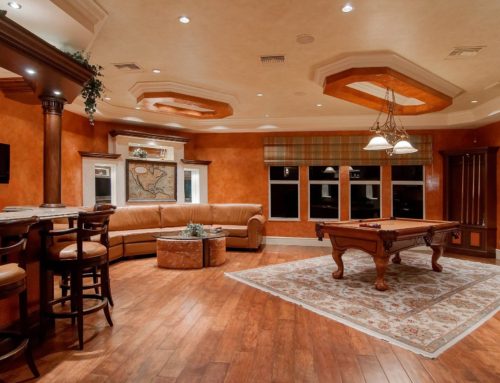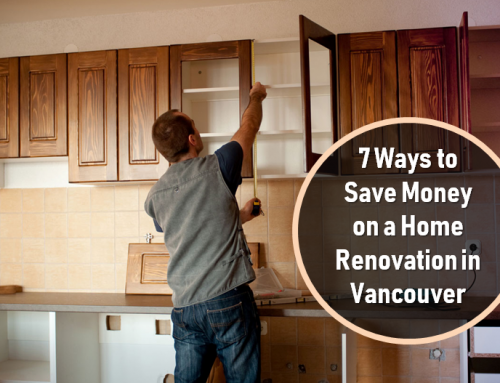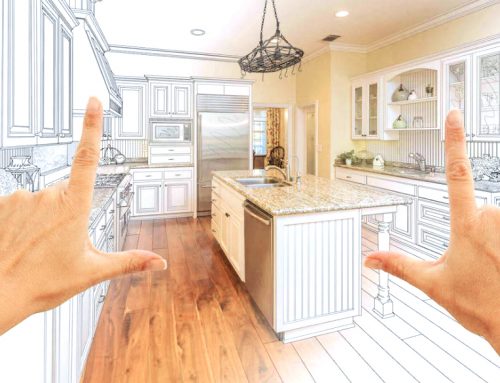Vancouver’s housing market is known for its high costs and compact living spaces, making multifunctional designs essential for urban homes. Recent data shows that condos often range from 500 to 900 square feet, with many new developments under 600 square feet, and average prices hovering around $800,000 as of mid-2025. This guide explores how to maximize your space, blending style and functionality for a comfortable urban lifestyle.
What Are Multifunctional Spaces?
Multifunctional spaces are designed to serve multiple purposes, maximizing the utility of limited square footage. Think of a sofa that unfolds into a bed, a dining table that doubles as a desk, or a wall unit that hides storage and a fold-down workspace. In Vancouver’s urban homes, where space is at a premium, these designs are a lifeline for residents juggling diverse needs—remote work, social gatherings, or family life.
Why They’re Essential in Vancouver?
Vancouver’s high real estate prices drive demand for smaller homes. The median condo size is 769 square feet, per Business in Vancouver, and many new builds are even smaller, especially in high-density areas like Downtown or Yaletown. Multifunctional spaces offer:
Space Efficiency: Make every inch count, reducing the need for a larger home.
Cost Savings: Smaller spaces mean lower rent or mortgage payments.
Flexibility: Adapt to changing needs, like working from home or hosting guests.
Style: Well-designed spaces look clean and organized, enhancing your home’s appeal.
Real-Life Example
Sarah, a graphic designer in a 500-square-foot Mount Pleasant studio, needed a workspace, living area, and guest room. She installed a murphy bed with a fold-down desk, sourced from Vancouver Woodworks, and an extendable coffee table that seats four. Her space now seamlessly transitions between work, relaxation, and hosting.
Takeaway
Multifunctional spaces are about identifying your priorities and designing around them. In Vancouver, where small homes are the norm, these designs are key to comfortable urban living.
Vancouver’s Urban Landscape: The Space Challenge
Vancouver’s housing market is shaped by its stunning geography and booming economy, but these come at a cost. Nestled between mountains and the Pacific Ocean, the city’s limited land drives real estate prices skyward. In May 2025, the average condo price was $762,900, a 2% year-over-year drop but still out of reach for many, per nesto.ca. This pushes residents toward smaller homes, with condos averaging 700–900 square feet.
Neighborhood Dynamics
Yaletown: Sleek high-rises with open-concept layouts ideal for multifunctional designs.
West End: A mix of older walk-ups and modern towers, often with quirky, space-constrained layouts.
Mount Pleasant: Eclectic, attracting young professionals who value style in compact homes.
Kitsilano: Cozy condos and heritage conversions needing creative storage solutions.
Challenges of Small Spaces
Small spaces can feel restrictive without proper design. Common issues include:
Clutter: Limited storage leads to mess, making rooms feel smaller.
Functionality: Balancing work, dining, and relaxation in one area is tough.
Aesthetics: Overcrowding can ruin a home’s visual appeal.
Case Study
John, a tech worker in a 650-square-foot Downtown condo, struggled to create a home office without losing his living room. With help from Space Harmony Designs, he installed a sliding partition and a foldable desk, maintaining an open feel while adding functionality.
Takeaway
Vancouver’s urban landscape demands innovative design to overcome space constraints. Understanding your neighborhood’s character can guide your multifunctional approach, whether it’s Yaletown’s modern vibe or Kitsilano’s cozy charm.
Design Principles for Multifunctional Spaces
Creating a multifunctional space starts with core principles that balance form and function. Vancouver’s 2025 design trends, like biophilic elements and smart home integration, enhance these principles, per Bella Virtual Staging.
Core Principles
Minimalism: Streamlined furniture and decor reduce visual clutter.
Flexibility: Multi-purpose pieces adapt to different needs.
Vertical Space: Walls offer storage, desks, or beds, freeing floor space.
Light and Color: Light hues and mirrors create a spacious feel, vital in Vancouver’s cloudy climate.
Practical Tips
Measure Your Space: Map dimensions to ensure furniture fits, advises Ami McKay of Pure Design.
Prioritize Needs: Identify key activities (e.g., work, dining) and design around them.
Use Bold Accents: Incorporate earthy greens or moody blues, 2025’s trending colors, for visual interest without overwhelming the space.
Local Trend: Biophilic Design
Vancouverites love nature, and biophilic design—using materials like Douglas fir or cedar—brings the outdoors in. A 2025 study noted a 40% reduction in embodied carbon emissions with local materials, aligning with the city’s eco-goals.
Takeaway
These principles, combined with Vancouver’s design trends, create spaces that are both functional and inviting. Start by planning your layout and exploring local showrooms for inspiration.
Furniture and Decor Choices for Vancouver Homes
The right furniture is the backbone of a multifunctional space. In Vancouver, where style meets practicality, multi-purpose pieces are a must.
Top Furniture Types
Sofa Beds: Transform living rooms into guest bedrooms.
Extendable Tables: Expand for dining, shrink for daily use.
Modular Shelving: Reconfigure as needs evolve.
Murphy Beds: Fold away to free up floor space.
Storage Ottomans: Serve as seating, tables, and storage.
Local Retailers
Inform Interiors: Sleek, modern pieces in Yaletown.
Moe’s Home Collection: Modular designs in Mount Pleasant.
IKEA Coquitlam: Budget-friendly options for renters.
Decor Tips
Mirrors: Reflect light to enhance space, ideal for north-facing condos.
Light Colors: White or beige opens up rooms, per 2025 minimalist trends.
Plants: Low-maintenance varieties add Vancouver’s natural vibe.
Example
Lisa, a West End renter, bought a sofa bed from Inform Interiors for her 450-square-foot studio. Paired with a wall-mounted desk, her space now serves as a bedroom, office, and lounge.
Takeaway
Invest in multi-purpose furniture from Vancouver retailers to maximize functionality. Decor choices like mirrors and plants can elevate your space’s aesthetic.
Case Studies: Real Vancouver Transformations
Real-life stories inspire action. Here are two Vancouver examples showcasing multifunctional design.
Case Study 1: Yaletown Studio
Who: Emma, a 30-year-old marketing consultant. Space: 500-square-foot studio in Yaletown. Challenge: Needed a home office, living area, and guest room. Solution: Emma collaborated with Space Harmony Designs to install a murphy bed with shelving. A foldable dining table doubled as a desk, and a sliding partition separated her workspace. Light colors and mirrors enhanced the space. Result: Emma now hosts friends, works efficiently, and enjoys a clutter-free home.
Case Study 2: Mount Pleasant Condo
Who: The Chen family, parents and a toddler. Space: 800-square-foot two-bedroom condo in Mount Pleasant. Challenge: Needed a play area, dining space, and storage. Solution: A loft bed in the child’s room freed floor space for play. A kitchen island with extendable leaves served as a dining table. Custom storage from Vancouver Closets maximized closets. Result: The family enjoys a functional, organized home.
Takeaway
These transformations highlight how local designers and creative solutions can make small spaces shine. Consider consulting a Vancouver designer for your project.
Sustainable Design in Multifunctional Spaces
Vancouver’s eco-conscious culture makes sustainability a priority in home design. Multifunctional spaces, by using less space, are inherently green, but you can go further.
Sustainable Practices
Reclaimed Materials: Salvaged wood for furniture or decor.
Energy-Efficient Appliances: Compact, low-energy models.
Local Sourcing: Buy from Vancouver artisans to reduce emissions.
Green Certifications: Choose FSC or Greenguard-certified products.
Local Example
In Gastown, a couple redesigned their 700-square-foot loft with reclaimed cedar from Urban Woodcraft. Their foldable dining table doubles as a workspace, blending eco-friendliness with function.
Data Point
A 2025 report noted that 55% of Vancouver homeowners prioritize eco-friendly materials, reflecting the city’s green ethos.
Takeaway
Sustainable design enhances multifunctional spaces while aligning with Vancouver’s values. Local resources make it easy to go green.
Expert Tips and Common Mistakes
Vancouver’s design community offers wisdom for small-space success. Here’s advice from experts like Ami McKay, plus pitfalls to avoid.
Expert Tips
Plan for Flow: Ensure easy movement, says McKay (Pure Design).
Invest in Quality: Durable furniture saves money long-term.
Use Natural Light: Sheer curtains maximize Vancouver’s windows.
Test Layouts: Use painter’s tape to outline furniture placement.
Common Mistakes
Overcrowding: Too many pieces make spaces feel cramped.
Ignoring Storage: Clutter accumulates without built-in solutions.
Dark Colors: Heavy hues shrink perceived space.
Example
Tom in Gastown overcrowded his 600-square-foot loft with bulky furniture. After consulting Happy Home Design, he swapped for a modular sofa and wall-mounted shelves, creating an open feel.
Takeaway
Expert advice and avoiding pitfalls can streamline your design process. Vancouver’s designers are a valuable resource.
Conclusion: Transform Your Vancouver Home Today
Multifunctional spaces are the future of Vancouver’s urban homes, offering a solution to the city’s space constraints. By embracing minimalism, flexibility, and sustainability, you can create a home that adapts to your needs without compromising style. Whether inspired by Emma’s Yaletown studio or the Chen family’s Mount Pleasant condo, the principles are universal: prioritize functionality, choose versatile furniture, and incorporate Vancouver’s 2025 trends like biophilic design and bold colors.
Start by assessing your space and needs. Visit showrooms like Inform Interiors or consult designers like Space Harmony for tailored solutions. Explore our guides on small space furniture for more ideas. Don’t let limited space hold you back—begin your project today and create a home that works as hard as you do.
Summary Box: Key Takeaways
Multifunctional spaces maximize Vancouver’s small condos, averaging 769 square feet.
Use minimalism, flexibility, and vertical storage for efficiency.
Local retailers and designers offer tailored solutions.
Sustainable design aligns with Vancouver’s eco-conscious values.
FAQs About Designing Multifunctional Spaces in Vancouver
What is a multifunctional space?
A space serving multiple purposes, like a living room that doubles as a bedroom or office, ideal for Vancouver’s compact homes.
How much does it cost to design a multifunctional space in Vancouver?
Costs range from $2,000 for basic furniture to $10,000+ for custom designs, depending on scope.
Where can I find space-saving furniture in Vancouver?
Try Inform Interiors in Yaletown, Moe’s Home Collection in Mount Pleasant, or IKEA Coquitlam.
How can I make my small apartment feel larger?
Use light colors, mirrors, vertical storage, and multi-purpose furniture to create an open feel.
Are sustainable materials worth it for small spaces?
Yes, they reduce environmental impact and add value, with options like reclaimed wood from Urban Woodcraft.




